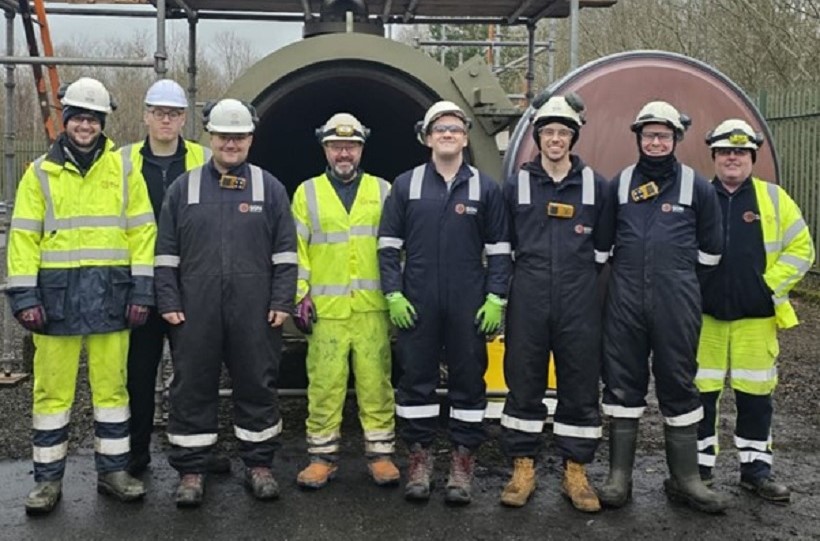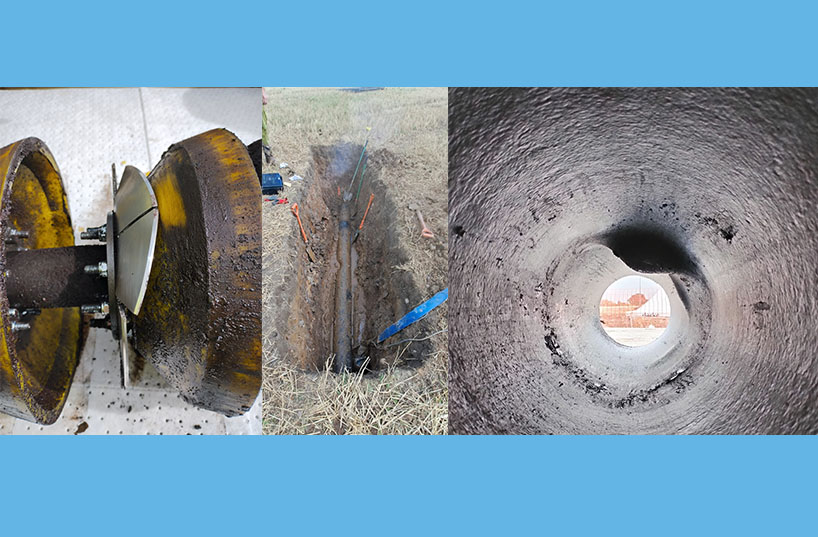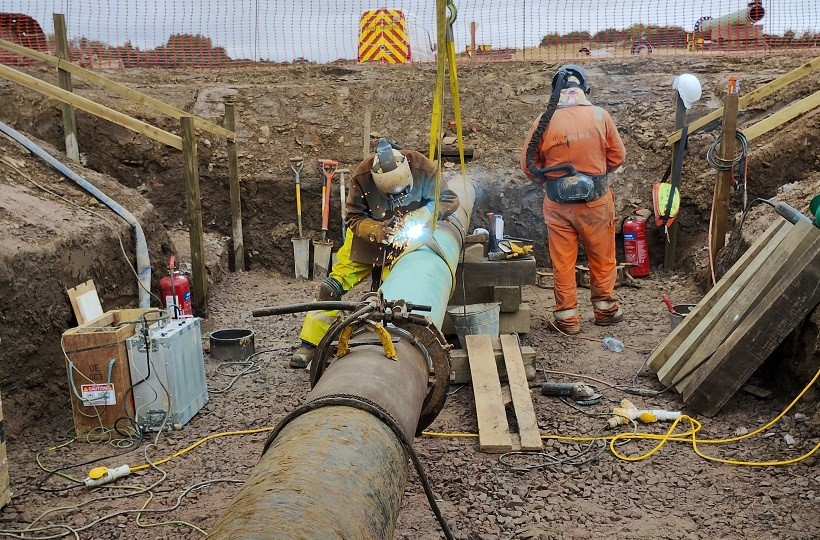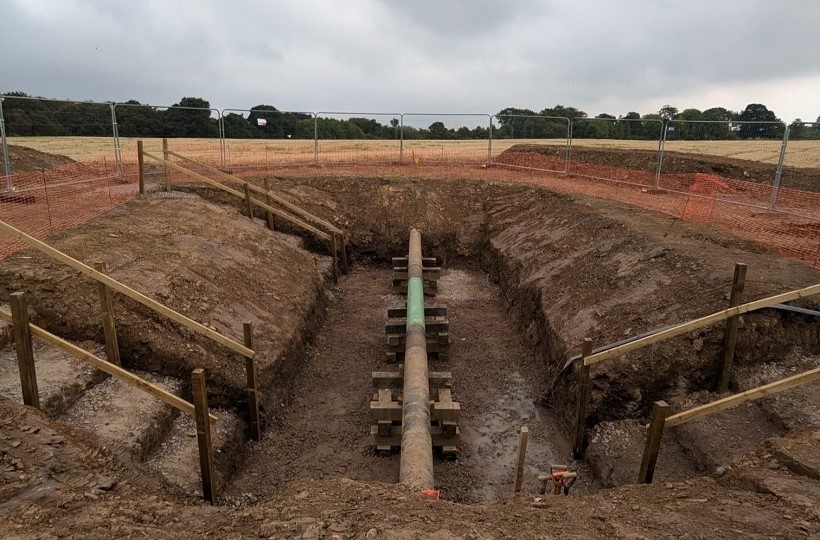
Meet some of our Pipelines team: Alastair Shaw, Ryan Boyd, Liam McArthur, Mark Anderson, Euan Munro, Scott Thomson, Scott Curie and Andy Stewart.
A rare repair to a damaged high pressure pipeline in Scotland has been undertaken successfully, ensuring a safe and continued gas supply to many thousands of homes.
The urgent remedial works followed an inspection by our Scottish Maintenance team on the Baillieston to Motherwell pipeline in September, last year. An obstruction was found by one of our pipeline inspection gauges (pigs), which are used for inspections and other specific tasks.
Data from the tool revealed a significant dent in the pipeline, which was not there during a previous inspection.
After the operating pressure in the pipeline was reduced, an above ground survey helped us locate the damage. Initial digs carried out revealed a significant dent and measurements were taken. We then prepared to isolate the pipeline and carry out a repair.
Critical infrastructure
David Wylie, Pipeline Engineering Manager, explained: “Our LTS network is critical infrastructure so we do regular surveys and inspections to ensure we can continue to operate it safety.
“Before we began the repair on the Baillieston to Motherwell pipeline, there were a lot of moving parts and lots of input from many across the business. Colleagues in Major Projects assisted in sourcing replacement pipe to be tested and prepared, our southern Maintenance colleagues assisted in facilitating and witnessing the pressure test on the replacement pipe at one of their sites, and specialist contractors actioned weld procedures and resources for the cut out and replacement. In the meantime, the Pipelines team did what they do best and set to prepare the cut-out location.”
With the pipeline safely isolated, the dented section was cut out and replaced with the new section of pipe and welded in place. These welds are what’s called ‘Golden Welds’, due to the fact that they are made post hydrotest, so they see a higher level of inspection once completed.
With the repair completed, the pipeline could then be recommissioned and returned to normal operating pressures.
David added: “This was an unusual example, as having to cut out damaged sections of pipeline is very rare. In most cases we can carry out repairs without taking the pipeline out of service.
“I’m very proud of the fact the whole team, led by Pipeline Engineers Andy Stewart and Mark Anderson, managed to turn around the whole process within three weeks of finding the damage.”

L-R: Deflected gauge plate, the initial trial hole at dent location and internal view following repair.

'Golden' welds being carried out on a cut out section.

Completed repair, re-pressurised and ready for reinstatement.
In Scotland we have over 1,300km of high pressure pipelines forming the Local Transmission System (LTS). These pipelines run at pressures up to 85bar and supply gas to our distribution networks.
This financial year we have carried out eight inspections. Each presents different challenges, with a lot of planning and analysis carried out to pick the best time of year to do the inspection.
Because the speed of the tool is determined by the flow of gas in the pipeline, we need to aim for demand conditions that will give us the best range of speeds for the inspection tool, this often means running pigs at all hours to the day and night shifts are not unusual.

